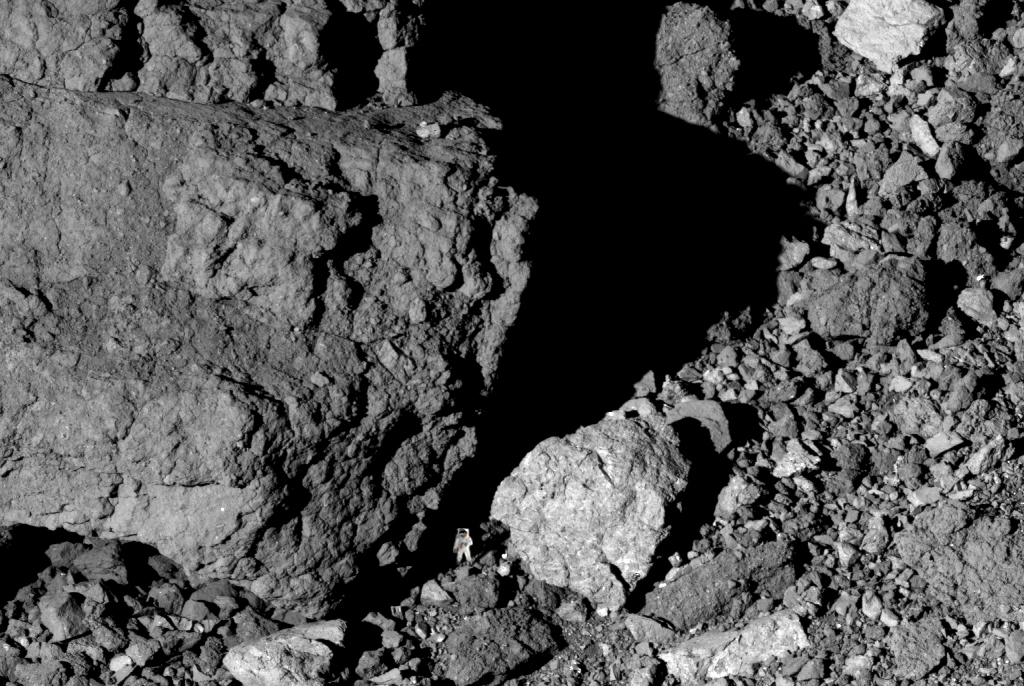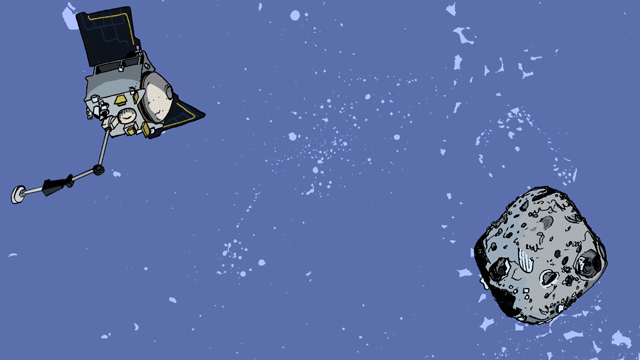OSIRIS-REx’s Successful Boop
By Sarah Treadwell
On October 20, 2020, NASA reached a significant achievement with a spacecraft named OSIRIS-REx. This was a mission nearly 10 years in the works. OSIRIS-REx’s mission objective was to sample and return to Earth 60 g of small, dusty particles from an asteroid named Bennu, 200 million miles from Earth. Upon its successful return, this will deliver some of the first samples of fresh asteroid material brought back from our solar system. Other return sample missions have included Genesis, Stardust and Hayabusa and the soon to return to Earth Hayabusa 2.
Bennu is considered an Apollo asteroid, meaning its orbital path at some point crosses Earth’s orbital path. It is a carbonaceous asteroid, containing a large amount of organic compounds, including some of the compounds that are considered to be precursors to biomolecules. Bennu is estimated to be over 4.5 billion years old, formed in the early days of our solar system. Scientists are interested in studying it because it likely could be similar to asteroids that hit our early Earth and which may have brought water and the molecules that brought forth life.
Bennu was an optimal asteroid choice initially due to its slow rotation and near-Earth proximity. Preliminary scans of the sky-scraper sized asteroid seemed to indicate a sandy surface, ideal for sample retrieval. However, after a two year journey to reach Bennu, scientists were surprised to find an extremely rocky surface. This presented a much trickier challenge to retrieve a sample and required a far more careful analysis of where to land.

In order to determine an ideal location to perform the sampling, called the TAP (Touch and Go) procedure, OSIRIS-REx spent 2 years carefully scanning the asteroid in precise detail. TAP then utilized nitrogen thrusters to carefully push downward while also backwards on Bennu’s surface. This then stirred up samples into it’s collection arm while also preparing the craft to safely backtrack back up into space. This slight touch and go action became virally referred to as “The Great Boop”.

Remarkably, OSIRIS-REx was able to perform the TAP procedure extremely accurately and on its first attempt. Skilled maneuvering with the spacecraft’s Natural Feature Tracking (NFT) guided OSIRIS-REx safely to Bennu’s surface, autonomously avoiding the countless amounts of hazardous rocks and boulders. Confirmation of how large of a sample was collected will be determined over the coming week.
This historic event was the culmination of countless hours of works by incredibly skilled engineers and scientists who additionally had to deal with the challenges of the ongoing Covid-19 pandemic. It serves as a wonderful reminder that when humans work together, we can achieve remarkable things, even in times of great adversity.
Sarah Treadwell is a student and communicator of science. She has a passion for sidewalk astronomy and a curiosity for learning how the universe works. She is Visiting Scholar in Marketing and Communications for the Blue Marble Space Institute of Science.
